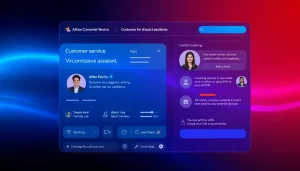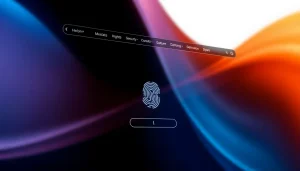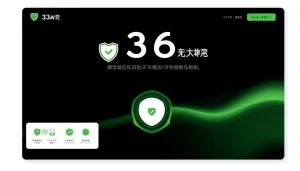Chainlink vs Quant: Choosing the Right Blockchain Infrastructure for Your Needs
Introduction to Chainlink vs Quant
In the rapidly evolving landscape of blockchain technology, two projects that have garnered significant attention are Chainlink and Quant. While both serve prominent roles within the ecosystem, they focus on distinct functions that cater to different aspects of blockchain utility. This article delves into a comparative analysis of these two platforms, allowing readers to understand their intricacies better. With their unique functionalities and applications, choosing between chainlink vs quant can be a critical decision for investors and developers alike.
Understanding Blockchain Technology
Before diving into the specifics of Chainlink and Quant, it is essential to establish a foundation of what blockchain technology entails. At its core, blockchain is a decentralized digital ledger that records transactions across multiple computers. This technology ensures the integrity and transparency of data without the need for central authority. As various industries explore the potential of blockchain, the need for interoperability and reliable data inputs has become increasingly important.
Purpose and Functionality of Chainlink
Chainlink is a decentralized oracle network that addresses a crucial gap in the blockchain ecosystem—connecting on-chain smart contracts with off-chain data. Smart contracts, while powerful, operate within a closed environment and depend on external data to execute certain functions. Chainlink enables access to real-world data, APIs, and other off-chain resources, thus bridging the information gap.
Chainlink’s primary objectives include enhancing the reliability of smart contracts by providing verified data inputs and ensuring tamper-proof access to various data sources. This capability allows smart contracts to operate with high levels of efficiency, accuracy, and security. Additionally, Chainlink fosters an ecosystem of decentralized applications (dApps) that can thrive by utilizing real-time data, which is particularly valuable in sectors like finance, gaming, and insurance.
Purpose and Functionality of Quant
Contrarily, Quant’s focus is on achieving interoperability between different blockchains through its Overledger platform. This solution emphasizes the need for seamless communication across diverse blockchain networks, enabling various cryptocurrencies to exchange information and value effortlessly. In an environment with multiple blockchain ecosystems, Quant aims to eradicate silos, allowing developers to create applications spanning multiple chains.
Quant employs a unique approach called Overledger, which allows developers to build dApps that can interact with multiple blockchains without the complexity typically associated with such endeavors. By providing a unifying framework, Quant enables organizations to utilize the benefits of different blockchain technologies while mitigating operational friction.
Key Features Comparison of Chainlink vs Quant
Data Oracles vs Interoperability
The most fundamental distinction between Chainlink and Quant is their core functions. Chainlink operates on the principle of data oracles, which deliver external data to smart contracts. This is crucial for any application relying on accurate and reliable data feeds. In contrast, Quant’s focus is distinctly on interoperability, allowing data and value to flow smoothly between different blockchain networks.
While Chainlink is primarily utilized for enhancing data accuracy and reliability, Quant aims to provide the infrastructure necessary for a multi-chain environment. This means that both platforms address critical aspects of blockchain technology but from different angles, appealing to diverse needs within the ecosystem.
Market Applications and Use Cases
The applications for both Chainlink and Quant span various industries, each addressing specific challenges. Chainlink’s capabilities empower sectors such as finance—where real-time market data is essential—insurance, where contract terms may rely on external variables like weather data, and gaming, which can integrate real-world events into gaming experiences.
On the other hand, Quant’s applications thrive where interoperability is paramount. Industries such as supply chain management benefit significantly from being able to track items across multiple blockchain platforms. Furthermore, financial institutions can leverage Quant to facilitate cross-border transactions seamlessly, thus enabling a more fluid financial ecosystem.
Technical Architectures Explained
A comparative analysis of the technical architectures of Chainlink and Quant reveals important differences. Chainlink is built on a decentralized network of nodes known as “oracles,” which retrieve, verify, and relay data to smart contracts. This decentralized nature enhances security, as no single point of failure exists. The platform also employs reputation systems to ensure quality data delivery, maintaining the reliability of smart contracts dependent on this data.
Quant’s Overledger operates on a different paradigm, allowing for the creation of multi-chain applications without needing to alter the underlying blockchains. It acts as an interface that connects different networks, utilizing smart contracts to facilitate data movement between multiple chains while maintaining security and scalability. The architecture is designed to promote ease of use and integration, making it an appealing choice for developers looking to build cross-chain applications.
Analysis of Market Performance: Chainlink vs Quant
Price and Market Capitalization Trends
When evaluating market performance, price trends and market capitalization are crucial metrics. Chainlink has shown considerable momentum in its market valuation, mainly driven by the growing demand for decentralized finance (DeFi) and oracle services. Its market capitalization reflects its unique position as a leading oracle provider in a surging sector.
In contrast, Quant’s market performance has been bolstered by its innovative approach to interoperability. As organizations increasingly recognize the need for multi-chain applications, Quant’s value proposition becomes even more compelling. Understanding the past price movements and trends can provide potential investors with insights into future performance and market reach.
Trading Volatility and Risk Factors
Investors must consider the trading volatility of both Chainlink and Quant. Cryptocurrencies are prone to fluctuations driven by market sentiment, regulatory developments, and technological advancements. Chainlink, due to its established presence in the DeFi space, may experience relatively stable momentum, yet it is not insulated from large market swings.
On the other hand, Quant’s relative novelty may expose it to greater volatility. However, its unique offering of interoperability solutions positions it to tap into emerging trends in blockchain technology, which may enhance its stability in the long run. Understanding the specific risks associated with each project will be essential for any investor looking to navigate these waters.
Future Outlook for Investors
The future for both Chainlink and Quant appears promising, albeit from different perspectives. Chainlink’s essential role in connecting smart contracts to real-world data positions it well for continued growth, especially as more industries adopt blockchain technology. Investors will need to monitor developments in both the demand for oracles and the technical upgrades to the Chainlink network.
Quant, with its focus on interoperability, stands to benefit as organizations increasingly realize the limitations of siloed blockchain environments. The demand for integrated blockchain solutions is only likely to increase, which may drive up the adoption of Quant’s framework. Investors should remain informed about partnerships and technological advancements that could influence the adoption and scalability of the Quant network.
Challenges Facing Chainlink vs Quant
Technical Challenges and Limitations
Despite their promising prospects, both Chainlink and Quant face technical challenges that could hinder their progress. Chainlink’s reliance on decentralized nodes for data accuracy means that any failure or delay in these nodes can disrupt contract execution. Additionally, as demand for oracles increases, ensuring the capacity and reliability of data feeds is essential, potentially leading to scalability issues.
Quant’s architecture, while innovative, must continually adapt to the rapidly changing landscape of blockchain integration. As new blockchains emerge and existing ones evolve, ensuring compatibility and functionality across these networks remains a significant challenge. Continuous development and community feedback will be vital to overcoming such obstacles.
Regulatory Landscape Considerations
The regulatory environment surrounding blockchain technology is ever-evolving and presents challenges for both platforms. Chainlink must navigate compliance issues related to data privacy and security, especially as it deals with information sourced from the real world. Maintaining user trust amid regulatory scrutiny is imperative for its continued success.
Quant, with its focus on interoperability, must also contend with potential regulatory complications across various jurisdictions. Ensuring that their technology adheres to compliance standards while providing cross-chain functionality will require ongoing adjustments as regulations evolve. Awareness of these landscapes will be crucial for both platforms as they grow and adapt.
Community and Ecosystem Support
Community and developer support play a crucial role in the success of both Chainlink and Quant. Chainlink has cultivated a strong community of developers who contribute to improving the oracle network, fostering innovation within its ecosystem. This community involvement plays a vital role in addressing issues and enhancing user trust.
Quant also relies on community engagement to drive the adoption of its Overledger platform. By promoting collaborative efforts with developers and organizations, Quant can strengthen its network and ensure that its solutions are robust and widely accepted. A strong community can often act as a catalyst for growth and technological advancement.
Conclusion: Making the Right Choice between Chainlink vs Quant
Summarizing Key Takeaways
In conclusion, Chainlink and Quant represent two powerful but distinct approaches to blockchain technology. Chainlink’s focus on data oracles caters to the immediate need for reliable, off-chain data feeding into smart contracts, while Quant’s emphasis on interoperability promotes a more integrated blockchain ecosystem. Understanding the unique attributes of each can assist individuals in making informed decisions.
Final Recommendations for Investors
Investors looking to choose between Chainlink and Quant should assess their individual investment strategies and goals. If the focus is on the burgeoning DeFi sector with a clear requirement for data reliability, Chainlink may be the more suitable option. Alternatively, if the goal is to capitalize on the growing demand for cross-chain applications and solutions, Quant could represent a more compelling investment opportunity.
Future Directions in Blockchain Technology
The blockchain technology landscape continues to evolve, with both Chainlink and Quant poised to play pivotal roles. As industries further explore blockchain applications, the need for reliable data and interoperability will only intensify. Keeping abreast of technological advancements, regulatory changes, and market dynamics will be essential as these platforms and the broader blockchain ecosystem develop.














Post Comment